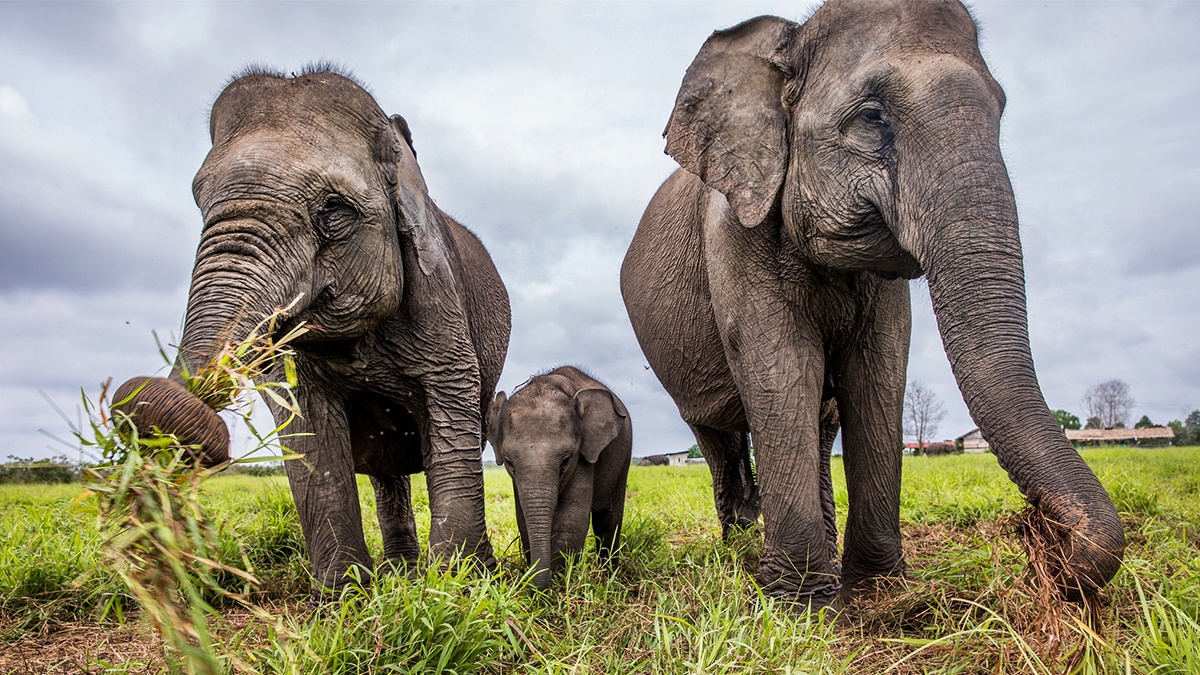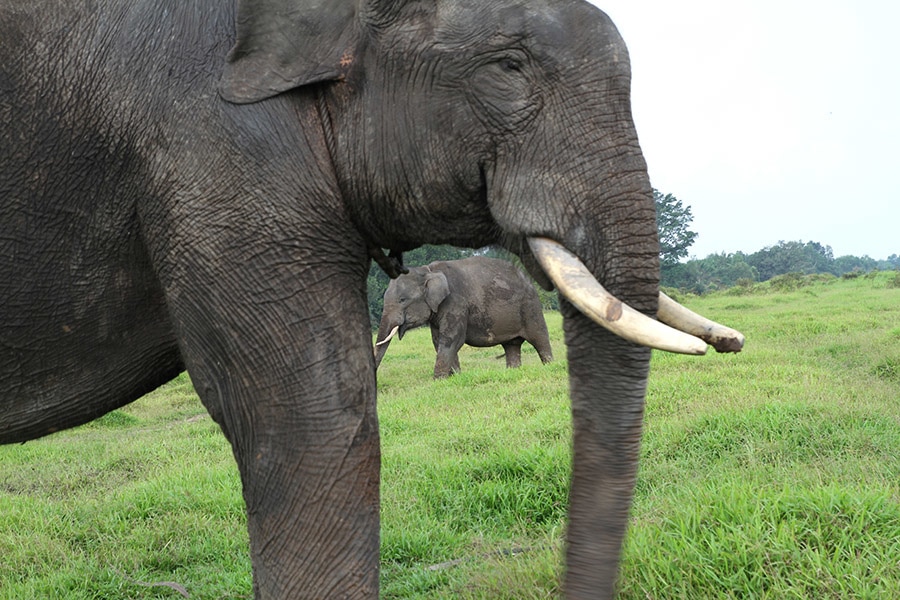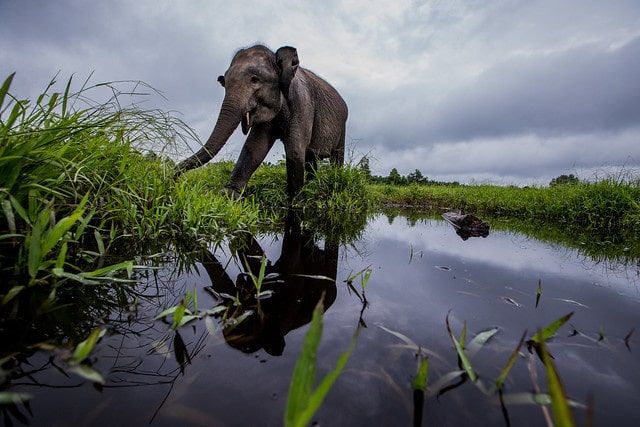
Elephant Sanctuary in Sumatra Threatened by Bridge and Port Projects

Elephants at the Padang Sugihan Wildlife Reserve on Dec. 15, 2018. Khairul Abdi / CIFOR / Flickr
By Taufik Wijaya
The planned construction of a bridge and private port in southern Sumatra threatens to damage one of the last remaining habitats of the island’s critically endangered elephants.
The project is part of the South Sumatra provincial government’s tourism development drive, under which it plans to build a bridge from the Sumatran mainland to the island of Bangka. The site where the bridge will begin has also been earmarked for construction of a private port by a subsidiary of Indonesia’s biggest paper producer, Asia Pulp & Paper (APP).
Environmentalists say both proposed projects will damage a crucial habitat of the Sumatran elephant (Elephas maximus sumatranus), a critically endangered species whose population has plunged as a result of habitat loss, human-wildlife conflicts, and poaching.
Forests in the area are already under intense pressure. APP’s pulp and paper mill, said to be the biggest in Indonesia, has been lambasted by critics who say it will drive APP’s appetite for pulpwood, compelling the company to clear more natural forest and peatlands. The mill has a greater production capacity than initially advertised.

Sumatran elephants in the Padang Sugihan Sebokor Wildlife Sanctuary in sourthern Sumatra.
Nopri Ismi / Mongabay Indonesia.
The location in question includes the Padang Sugihan Sebokor Wildlife Sanctuary, a particularly important hub for the elephants as it connects smaller populations in several other fragments of forest. Combined, these peatland habitats are home to an estimated 152 elephants, according to Jumiran, a local elephant conservation official. In December last year, conservation groups recorded five new elephant calves, indicating that the population is thriving in the sanctuary.
If the authorities have any intention to ensure the elephants’ continued survival, they should protect the area from any future development, said Yusuf Bahtimi, from the Center for International Forestry Research (CIFOR), who has studied this region of Sumatra extensively.
For instance, he said, any roads connecting to the planned bridge or port should be elevated, to allow the elephants to continue wandering below. “We can make that happen,” he said. “We made it to the moon, so protecting the elephant corridor and habitat should be easy.”
Yusuf also said the government should anticipate an influx of people to the area once the infrastructure projects were underway. To prevent unchecked sprawl and destruction of the forest, “the government must zone the area properly and correctly.
“[It should] state clearly which areas can be developed for what purposes, and which must be protected,” he added. “The areas to be protected include the corridors and habitats of the Sumatran elephant, peatland and forests.
“Failing to do so will result in conflicts between humans and elephants, which the elephants will lose.”
Yusuf also warned against a proposal to relocate the elephants from the area, saying this had been tried here in 1982, when the national government was incentivizing residents of Java to move to other islands across Indonesia.
“It failed,” he said of the relocation. “The elephants were moved because the location for the transmigration program was in their habitat. But the relocated elephants returned to the habitat.”
Since then, Yusuf said, authorities had allowed the area to revert to the wildlife sanctuary that it is today. The only solution, he said, “is to live in peace with the elephants.”
That’s what locals have been doing for years, according to Edi Rusman, a farmer in Perigi Talangnangka village, near the wildlife sanctuary. He said there had never been any human-elephant conflicts there involving local residents, and that any conflicts that did arise involved migrants and companies operating in the area.
“Any type of development will create conflicts if it doesn’t protect the elephant habitat,” Edi said. “So be careful with doing development.”

One of the young male elephants at the Padang Sugihan Elephant Training Center on Dec. 15, 2018.
Rifky / CIFOR
Reposted with permission from our media associate Mongabay.

 233k
233k  41k
41k  Subscribe
Subscribe 